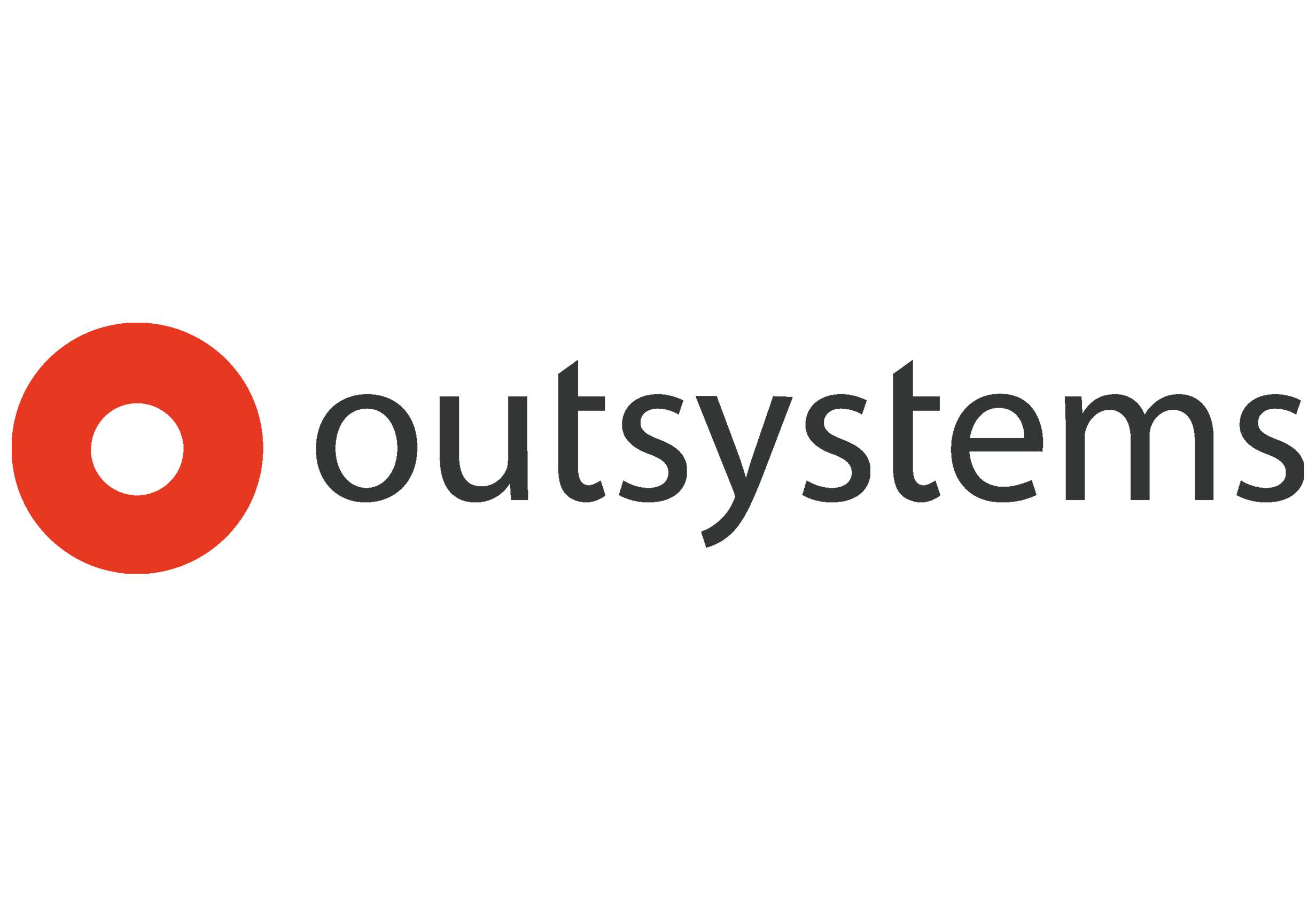By Mark Weaser, Vice President, APAC, OutSystems

In 2020, the world moved decisively online – and that genie is not going back into the bottle. So, creating a superior digital customer experience is critical for any business wanting to thrive in 2021 and beyond. Brands think they’re doing a great job of delivering on that mandate. Their customers don’t agree. It’s down to IT leaders to help their organizations close the gap.
The lockdown has changed our relationship with technology – forever. For example, 35 percent of customers increased their use of online banking in 2020 – and the majority will continue to do so once ‘business as usual’ resumes. So, the need to provide a seamless experience to these digital customers is paramount.
In truth, investment in the Customer Experience (CX) and in building the applications needed to support it was already a priority. The Harvey Nash – KPMG CIO Survey indicates that the top two priorities before COVID-19 – operational efficiency and the customer experience – remain the same after the pandemic has struck. Gartner also reports that 91% of organizations surveyed have CX as a primary or major goal of their digital business transformation efforts. The lockdown and the subsequent rush online have simply accelerated existing investments. After all, companies that might have considered good digital CX as a ‘nice to have’ when the many of their customer transactions were face-to-face now find that this has become a ‘must have’ with the bulk of those transactions online.

We’re Doing Great! Aren’t we?
The fact is that merely having basic digital service capabilities isn’t enough anymore – they must be first-grade. According to Gartner, more than two-thirds of companies compete mostly on the basis of CX – if they offer a mediocre experience,
their customers will opt for the products or services of competitors – and those are only a few clicks away. This penny has clearly dropped for brands, with 80% believing they provide a superior proposition.
However, this optimism is at odds with reality. According to Gartner, around 65% of B2C and 75% of B2B companies are falling behind in their CX transformations:
this is creating a “delivery gap”, with only 8% of customers agreeing that the experience they get from brands is superior.) Given the primacy of customer experience in most organization’s priorities, closing this gap is something CIOs believe is a key part of their remit. However, delivering on this ambition is easier said than done: CIO are now under more pressure than ever before.
There has always been a tension between maintaining the existing IT estate and building the applications, systems and infrastructure that is needed to invest in creating the digital customer experiences of the future. That tension has now reached breaking point. ‘Keeping the lights on’ was difficult enough when employees were safely ensconced in secure corporate locations;
now that they are distributed across hundreds or even thousands of individual home-working spaces, this is eating up even more resources, leaving little left over to attend to the future needs of the business.

Beyond Agile
Traditional ‘waterfall’ application development approaches are now (rightly) seen as archaic. But even so-called ‘Agile’ methodologies can’t meet the accelerated deployment schedules that businesses now demand if they rely on old ways of building software. Instead, IT leaders need to move beyond Agile to embrace a new approach to application development that embraces much higher degrees of automation, intelligence and repeatability. The IT function – and the business as
a whole – must stop treating the different touchpoints and applications that comprise their digital customer journeys as silos, each of which need to be developed and managed individually by different teams developing in different technologies.
To square the circle of business expectations and scarce resources, IT leaders should embrace a modern, AI-powered platform that allows them to speed through their backlog and keep up with new technologies. One that accelerates the development process for any kind of customer application, across any touchpoint, while also delivering full flexibility. One that allows them to create an “experience system”: a set of experience components, or modules, that can easily be reused across different touchpoints and applications, essentially eliminating duplicate development work, massively reducing complexity and accelerating time to
market – all the while ensuring consistency across their digital customer journeys. The application components that comprise an Experience System built on such a platform, may include a mesh of, not only UI and visual elements, but also business logic, processes, data and integrations (with third party services, APIs or existing core systems, for example). And because they are reused across the entire application portfolio, any changes made in response to changing customer preferences, regulatory requirements or competitive dynamics are made once, and instantly replicated everywhere they are used.
In short, achieving the agility the business requires of the IT function means moving beyond Agile development methodologies into new ways of delivering software.
This is the only realistic means of closing the gap between what the business believes it is delivering, the experience their customers actually get, and the speed at which they expect it.

โดย มาร์ค วีเซอร์ รองประธานประจำภูมิภาคเอเชีย-แปซิฟิกของเอาท์ซิสเต็มส์

ในปี 2563 ที่ผ่านมา โลกของเราได้ก้าวเข้าสู่ออนไลน์อย่างแท้จริง และการเปลี่ยนแปลงนี้จะดำเนินไปอย่างไม่มีวันถอยกลับ ดังนั้นองค์กรธุรกิจจึงจำเป็นต้องนำเสนอประสบการณ์ดิจิทัลที่เหนือกว่าให้แก่ลูกค้าเพื่อให้ธุรกิจอยู่รอดและประสบความสำเร็จทั้งในปีนี้และในอนาคต แบรนด์ต่าง ๆ อาจคิดว่าตนเองนำเสนอประสบการณ์ได้ดีพอแล้ว แต่ลูกค้ากลับไม่คิดเช่นนั้น และด้วยเหตุนี้ผู้บริหารไอทีจึงต้องเข้ามา
มีบทบาทช่วยองค์กรปิดช่องโหว่ดังกล่าว
มาตรการล็อคดาวน์ส่งผลให้ความสัมพันธ์ระหว่างผู้คนกับเทคโนโลยีเปลี่ยนแปลงไปอย่างถาวร ตัวอย่างเช่นปีที่แล้วมีลูกค้า 35 เปอร์เซ็นต์ใช้ออนไลน์แบงค์กิ้งเพิ่มมากขึ้น และส่วนใหญ่จะยังคงใช้ต่อไปหลังจากที่ธุรกิจเริ่มกลับเข้าสู่ ‘ภาวะปกติ’ ดังนั้นการนำเสนอประสบการณ์ที่ไร้รอยต่อให้แก่ลูกค้าบนระบบดิจิทัลจึงนับว่ามีความสำคัญอย่างมาก
ที่จริงแล้ว องค์กรต่าง ๆ ได้ให้ความสำคัญกับการลงทุนในเรื่องประสบการณ์สำหรับลูกค้า (Customer Experience – CX) และสร้างแอปพลิเคชันที่จำเป็นสำหรับการรองรับ CX โดยผลการสำรวจความคิดเห็นจาก Harvey Nash – KPMG CIO Survey ชี้ว่า ก่อนหน้าที่จะเกิดการแพร่ระบาดของโควิด-19
มีเรื่องใหญ่ ๆ สองเรื่องที่องค์กรธุรกิจให้ความสำคัญมากที่สุด ได้แก่ ประสิทธิภาพการดำเนินงาน และ ประสบการณ์ของลูกค้า แม้กระทั่งหลังช่วงการแพร่ระบาดไปแล้ว องค์กรก็ยังคงมุ่งเน้นสองเรื่องนี้มากที่สุด รายงานจากการ์ทเนอร์ยังระบุว่า 91% ขององค์กรที่ตอบแบบสอบถามกำหนดให้ CX เป็นเป้าหมายหลักสำหรับโครงการเปลี่ยนผ่านธุรกิจไปสู่ดิจิทัล การใช้มาตรการล็อคดาวน์และการโยกย้ายสู่ระบบออนไลน์ซึ่งเป็นผลสืบเนื่องตามมา นับเป็นปัจจัยเร่งที่กระตุ้นการลงทุนในส่วนนี้ โดยบริษัทที่เคยมองว่าการนำเสนอประสบการณ์ดิจิทัลให้แก่ลูกค้าเป็นเพียง ‘ทางเลือกหนึ่ง’ เพราะตอนนั้นธุรกรรมที่ทำกับลูกค้าส่วนใหญ่เป็นการติดต่อแบบพบปะเห็นหน้ากันโดยตรง แต่ทุกวันนี้ช่องทางดิจิทัลได้กลายเป็น ‘สิ่งที่ธุรกิจต้องมี’ สำหรับการรองรับธุรกรรมออนไลน์จำนวนมาก

สิ่งที่ทำอยู่ตอนนี้ดีพอแล้วหรือยัง?
ข้อเท็จจริงก็คือ การนำเสนอบริการดิจิทัลเพียงแค่ในระดับพื้นฐานไม่ใช่สิ่งที่เพียงพออีกต่อไป องค์กรจำเป็นต้องจัดหาบริการระดับชั้นนำที่ดีที่สุด ข้อมูลจากการ์ทเนอร์ชี้ว่า บริษัทกว่าสองในสาม แข่งขันกันนำเสนอ CX ระดับพื้นฐานเป็นส่วนใหญ่ ซึ่งถ้าหากบริษัทนำเสนอประสบการณ์ที่ไม่ค่อยดี ลูกค้าก็จะหันไปซื้อสินค้าหรือบริการจากบริษัทคู่แข่งในทันทีได้อย่างง่ายดายด้วยการคลิกหน้าจอเพียงไม่กี่ครั้ง แม้ว่าแบรนด์ต่าง ๆ จะเข้าใจความจริงดังกล่าว แต่ 80% ก็ยังเชื่อว่าตนเองนำเสนอประสบการณ์ที่เหนือกว่าคู่แข่ง
อย่างไรก็ตาม การมองโลกในแง่ดีนี้กลับสวนทางกับความเป็นจริง เพราะข้อมูลจากการ์ทเนอร์ยังระบุว่า ราว 65% ของบริษัทที่ทำธุรกิจแบบ B2C และ 75% ของบริษัทที่ทำธุรกิจแบบ B2B ยังล้าหลังในแง่ของการปรับเปลี่ยน CX ซึ่งนั่นก่อให้เกิดปัญหา “ช่องว่างในการให้บริการ” โดยมีลูกค้าเพียงแค่ 8% เท่านั้นที่ยอมรับว่าตนเองได้รับประสบการณ์ที่เหนือกว่า เนื่องจากองค์กรส่วนใหญ่ให้ความสำคัญอย่างมากต่อประสบการณ์ลูกค้า ดังนั้นผู้บริหารไอทีจึงมองว่าการแก้ไขปัญหาช่องว่างดังกล่าวถือเป็นภารกิจสำคัญอย่างหนึ่ง แต่การดำเนินงานเพื่อให้บรรลุเป้าหมายที่ว่านี้นับเป็นเรื่องยาก ดังนั้นผู้บริหารไอทีจึงตกอยู่ในภาวะกดดันเพิ่มมากขึ้นอย่างที่ไม่เคยมีมาก่อน
แน่นอนว่าฝ่ายไอทีต้องเผชิญกับแรงกดดันมาโดยตลอดทั้งในเรื่องของการดูแลรักษาระบบไอทีที่มีอยู่ และการพัฒนาแอปพลิเคชัน ระบบ และโครงสร้างพื้นฐานใหม่ที่จำเป็นสำหรับการนำเสนอประสบการณ์ดิจิทัลให้แก่ลูกค้าเพื่อรองรับอนาคต และทุกวันนี้แรงกดดันดังกล่าวไปถึงจุดแตกหักที่ฝ่ายไอทีไม่สามารถแบกรับได้อีกต่อไป ก่อนหน้านี้ที่พนักงานยังทำงานอยู่ในองค์กรที่มีระบบรักษาความปลอดภัย
ที่เข้มงวด ‘การดูแลระบบให้ทำงานได้อย่างต่อเนื่อง’ ก็ถือเป็นงานที่ยากพอแล้ว แต่ปัจจุบันยังต้องเจอโจทย์ใหม่ เมื่อพนักงานหลายร้อยหรือหลายพันคนทำงานจากที่บ้าน ส่งผลให้ฝ่ายไอทีทำงานหนักขึ้น
จนไม่มีเวลาตอบสนองต่อความต้องการหรือความจำเป็นในอนาคตของธุรกิจ

ยกระดับจากแนวทางแบบ Agile ไปสู่แนวทางใหม่
แนวทางการพัฒนาแอปพลิเคชันแบบเก่าที่เป็นขั้นตอนแบบไล่ระดับลงมาหรือที่เรียกว่าแนวทางแบบ ‘Waterfall’ กลายเป็นเรื่องล้าสมัยไปแล้ว และแม้กระทั่งแนวทางการพัฒนาซอฟต์แวร์แบบ ‘Agile’
ก็ยังไม่สามารถตอบสนองต่อตารางเวลาที่เร่งรีบในการติดตั้งใช้งานแอปพลิเคชันเพื่อรองรับความต้องการของธุรกิจในปัจจุบัน ทางที่ดีผู้บริหารไอทีควรพัฒนาต่อยอดไปให้ไกลกว่าแนวทางแบบ Agile โดยปรับใช้แนวทางใหม่ในการพัฒนาแอปพลิเคชันที่มีการใช้ระบบอัตโนมัติขั้นสูง ระบบอัจฉริยะ และความสามารถในการนำมาใช้ซ้ำได้ ฝ่ายไอที และองค์กรธุรกิจโดยรวม จะต้องเลิกมองว่าช่องทางติดต่อและแอปพลิเคชันต่าง ๆ สำหรับขั้นตอนการดำเนินการของลูกค้าเป็นระบบที่แยกออกจากกัน ซึ่งแต่ละระบบจะถูกพัฒนาและจัดการโดยทีมงานที่กำหนดไว้เฉพาะเพื่อพัฒนาเทคโนโลยีที่แตกต่างกัน
เพื่อตอบโจทย์ความต้องการด้านธุรกิจโดยใช้ทรัพยากรที่มีอยู่อย่างจำกัด ผู้บริหารไอทีจำเป็นต้องปรับใช้แพลตฟอร์มที่ทันสมัยซึ่งขับเคลื่อนด้วยระบบ AI เพื่อเร่งการทำงานที่มีอยู่ และก้าวให้ทันกับเทคโนโลยีใหม่แพลตฟอร์มนี้จะช่วยเพิ่มความรวดเร็วให้กับกระบวนการพัฒนาแอปพลิเคชันทุกประเภทสำหรับลูกค้า โดยครอบคลุมทุกช่องทางการติดต่อ พร้อมทั้งให้ความยืดหยุ่นอย่างเต็มที่ และแพลตฟอร์มดังกล่าวยังรองรับการสร้าง “ระบบประสบการณ์” (Experience System) ซึ่งหมายถึงชุดคอมโพเนนต์หรือโมดูลที่เกี่ยวข้องกับประสบการณ์ สามารถนำกลับมาใช้ซ้ำได้อย่างง่ายดายสำหรับพัฒนาช่องทางและแอปพลิเคชันต่าง ๆ ช่วยให้บุคลากรไอทีไม่ต้องทำงานพัฒนาที่ซ้ำซ้อนกัน ทั้งยังช่วยลดความยุ่งยากซับซ้อน และเพิ่มความรวดเร็วในการนำแอปพลิเคชันและบริการออกสู่ตลาด โดยทั้งหมดนี้มีความสอดคล้องกันสำหรับทุกขั้นตอนการดำเนินการของลูกค้าบนระบบดิจิทัล คอมโพเนนต์ของแอปพลิเคชันที่ประกอบด้วย Experience System ที่สร้างขึ้นบนแพลตฟอร์มดังกล่าว นอกจากจะมี UI และองค์ประกอบด้านภาพแล้ว ยังประกอบด้วยตรรกะทางธุรกิจ (Business Logic), กระบวนการ, ข้อมูล และการบูรณาการโดยสามารถเชื่อมต่อกับระบบอื่น (เข้ากับบริการของบริษัทอื่น, API หรือระบบหลักที่มีอยู่ เป็นต้น) และเนื่องจากคอมโพเนนต์ที่ว่านี้ถูกนำกลับมาใช้สำหรับแอปพลิเคชันต่าง ๆ ทั้งหมด ดังนั้นเมื่อต้องการปรับเปลี่ยนเพื่อตอบสนองต่อความต้องการของลูกค้าที่เปลี่ยนไป กฎระเบียบ หรือพลวัตด้านการแข่งขัน ก็สามารถปรับเพียงครั้งเดียว แล้วคัดลอกไปยังส่วนอื่น ๆ ที่มีการใช้งานคอมโพเนนต์นั้น ๆ ได้ทันที
สรุปก็คือ เพื่อเพิ่มความคล่องตัวให้กับธุรกิจ ฝ่ายไอทีจะต้องเปลี่ยนย้ายจากแนวทางการพัฒนาแบบ Agile ไปสู่แนวทางใหม่สำหรับการนำเสนอซอฟต์แวร์ ซึ่งจะช่วยแก้ไขปัญหาช่องว่างระหว่างสิ่งที่องค์กรธุรกิจเชื่อว่าตนเองกำลังนำเสนอ กับประสบการณ์จริงที่ลูกค้าได้รับ รวมไปถึงการตอบสนองที่รวดเร็วอย่างที่ลูกค้าต้องการ





